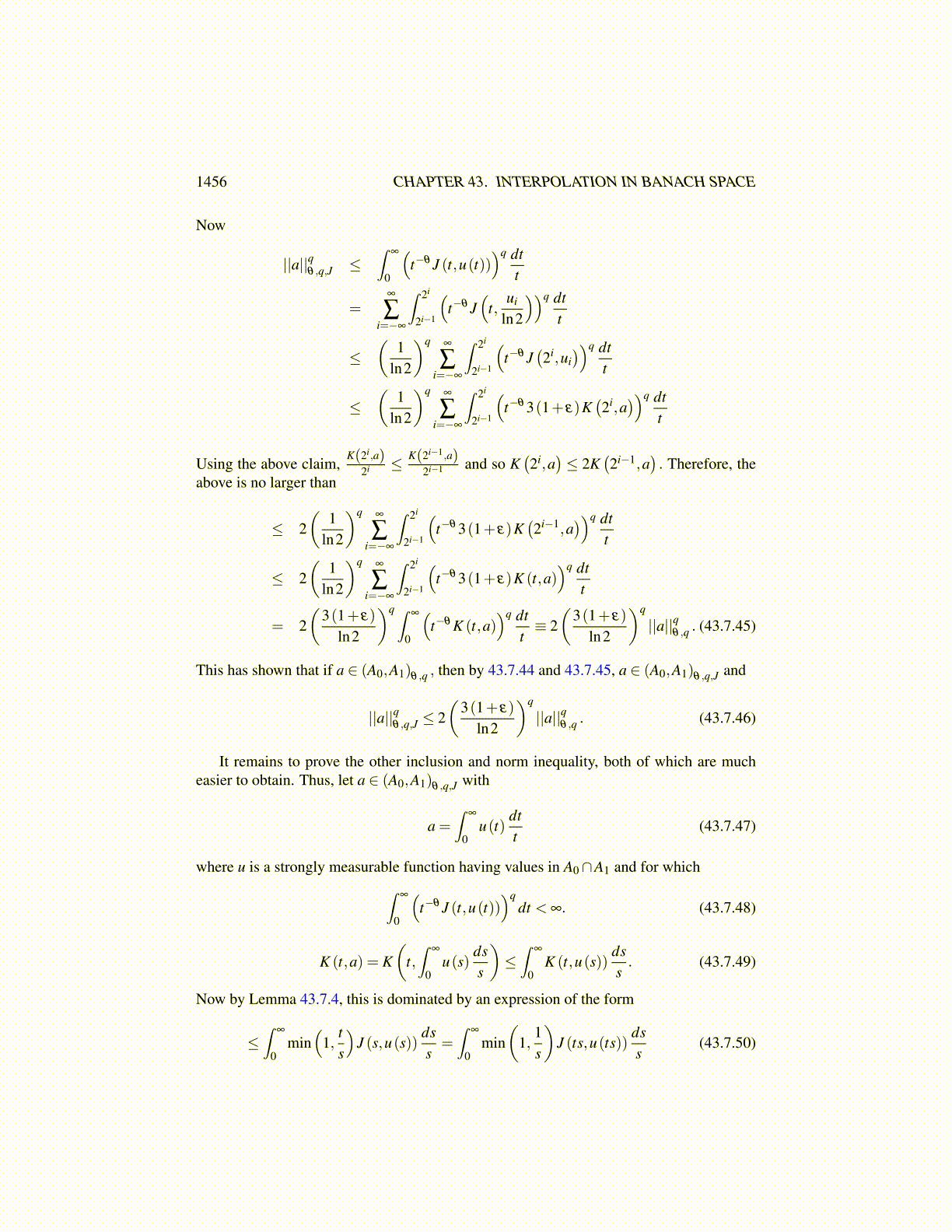
1456 CHAPTER 43. INTERPOLATION IN BANACH SPACE
Then let ui ≡ a0,i− a0,i−1 = a1,i−1− a1,i. The reason these are equal is a = a0,i + a1,i =a0,i−1 +a1,i−1. Then
n
∑i=−m
ui = a0,n−a0,−(m+1) = a1,−(m+1)−a1,n.
It follows a−∑ni=−m ui = a−
(a0,n−a0,−(m+1)
)= a0,−(m+1)+a1,n, and both terms converge
to zero as m and n converge to ∞ by 43.7.42. Therefore,
K
(1,a−
n
∑i=−m
ui
)≤∣∣∣∣a0,−(m+1)
∣∣∣∣+ ||a1,n||
and so this shows a = ∑∞i=−∞ ui which is one of the claims of the lemma. Also
J(2i,ui
)≡max
(||ui||A0
,2i ||ui||A1
)≤ ||ui||A0
+2i ||ui||A1
≤ ||a0,i||A0+2i ||a1,i||A1
+
≤2(||a0,i−1||A0
+2i−1||a1,i−1||A1
)︷ ︸︸ ︷||a0,i−1||A0
+2i ||a1,i−1||A1
≤ (1+ ε)K(2i,a
)+2(1+ ε)K
(2i−1,a
)≤ 3(1+ ε)K
(2i,a
)because t→ K (t,a) is nondecreasing. This proves the lemma.
Lemma 43.7.4 If a ∈ A0∩A1, then K (t,a)≤min(1, t
s
)J (s,a) .
Proof: If s≥ t, then min(1, t
s
)= t
s and so
min(
1,ts
)J (s,a) =
ts
max(||a||A0
,s ||a||A1
)≥( t
s
)s ||a||A1
= t ||a||A1≥ K (t,a) .
Now in case s < t, then min(1, t
s
)= 1 and so
min(
1,ts
)J (s,a) = max
(||a||A0
,s ||a||A1
)≥ ||a||A0
≥ K (t,a) .
This proves the lemma.
Theorem 43.7.5 Let A0,A1,K and J be as described above. Then for all q ≥ 1 and θ ∈(0,1) ,
(A0,A1)θ ,q = (A0,A1)θ ,q,J
and furthermore, the norms are equivalent.